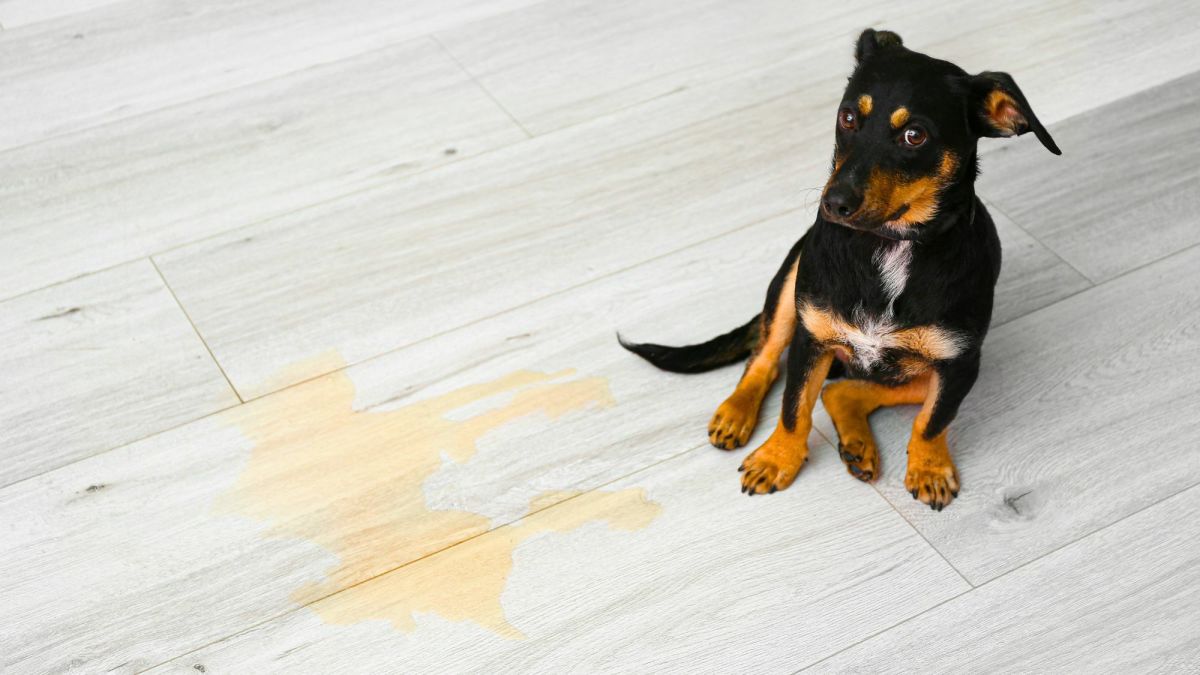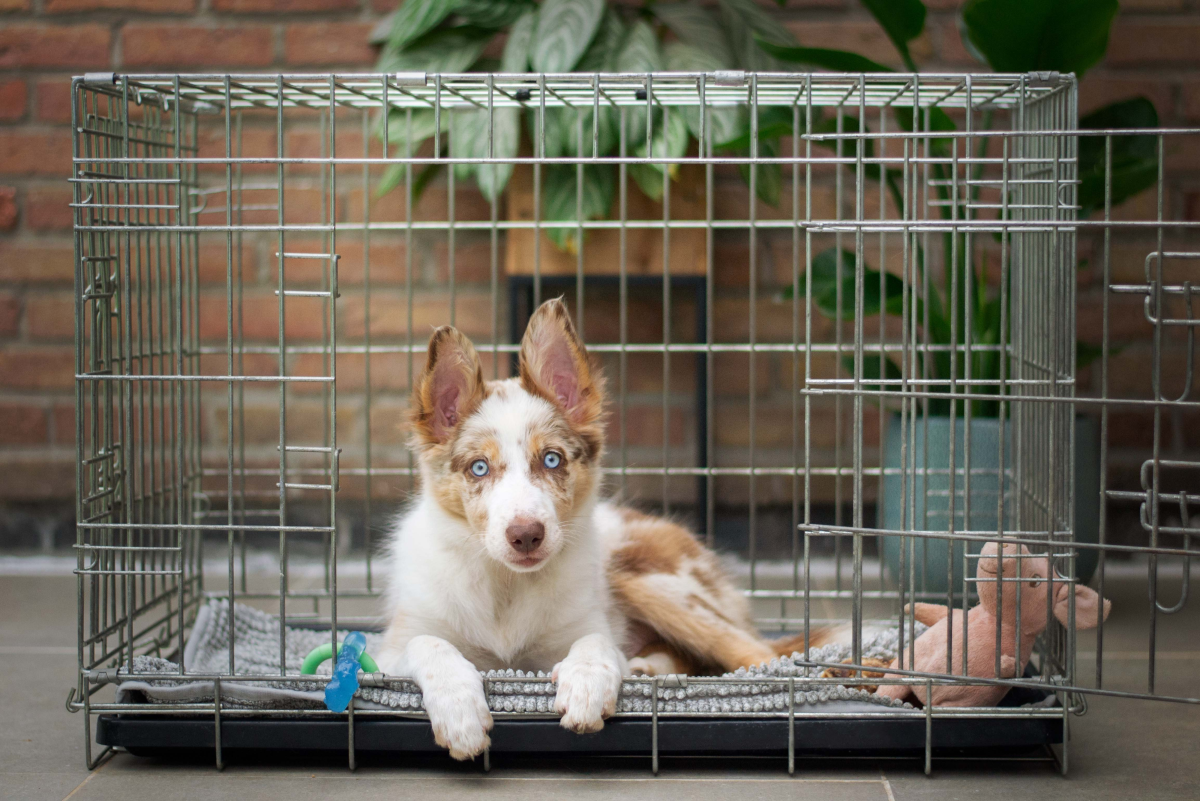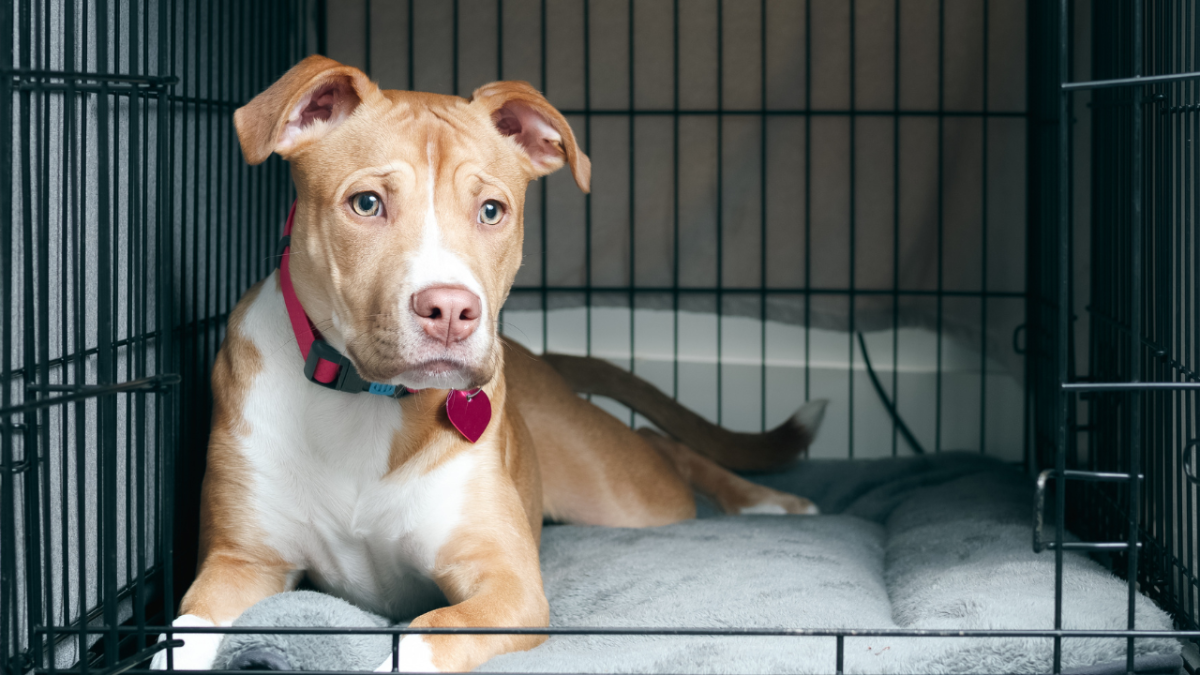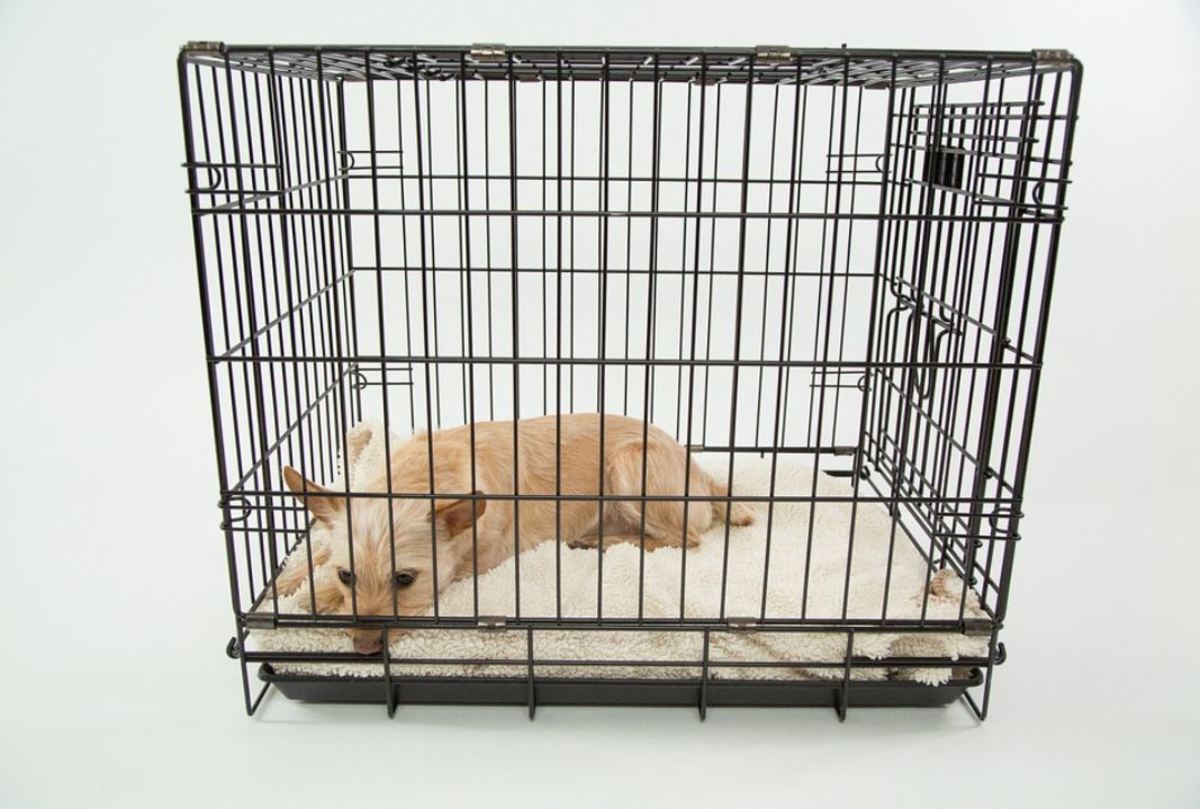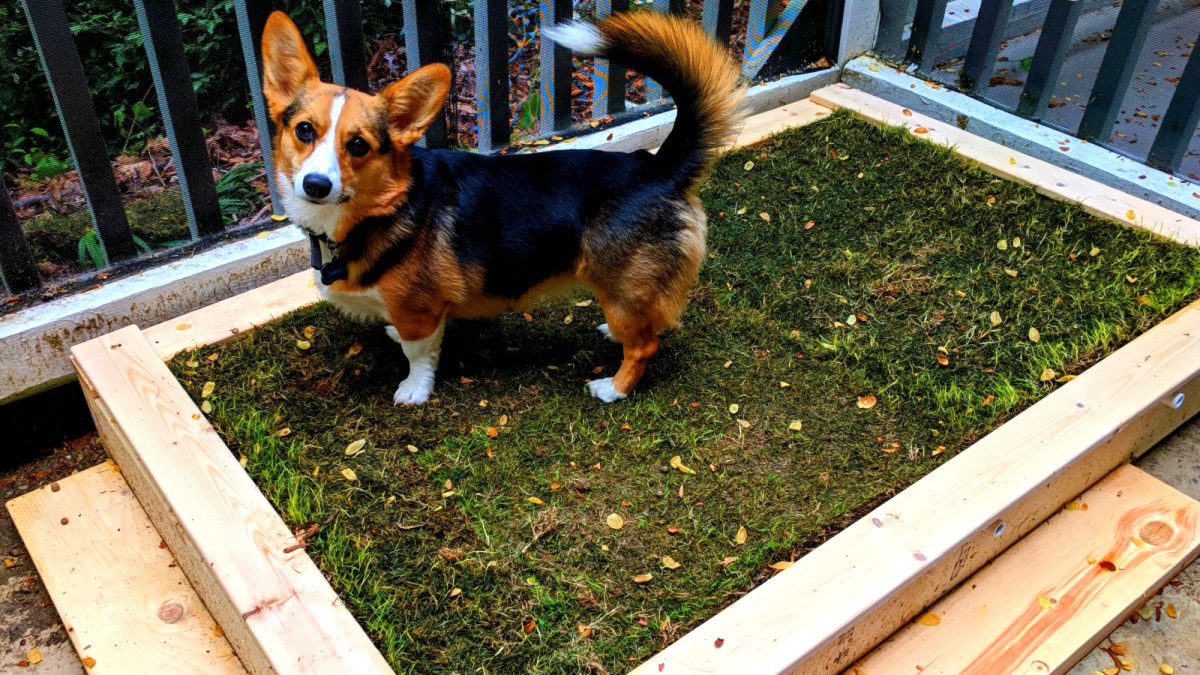- HubPages»
- Pets and Animals»
- Dogs & Dog Breeds»
- Dog Training
Crate Training Dogs: A Guide to its Correct Use
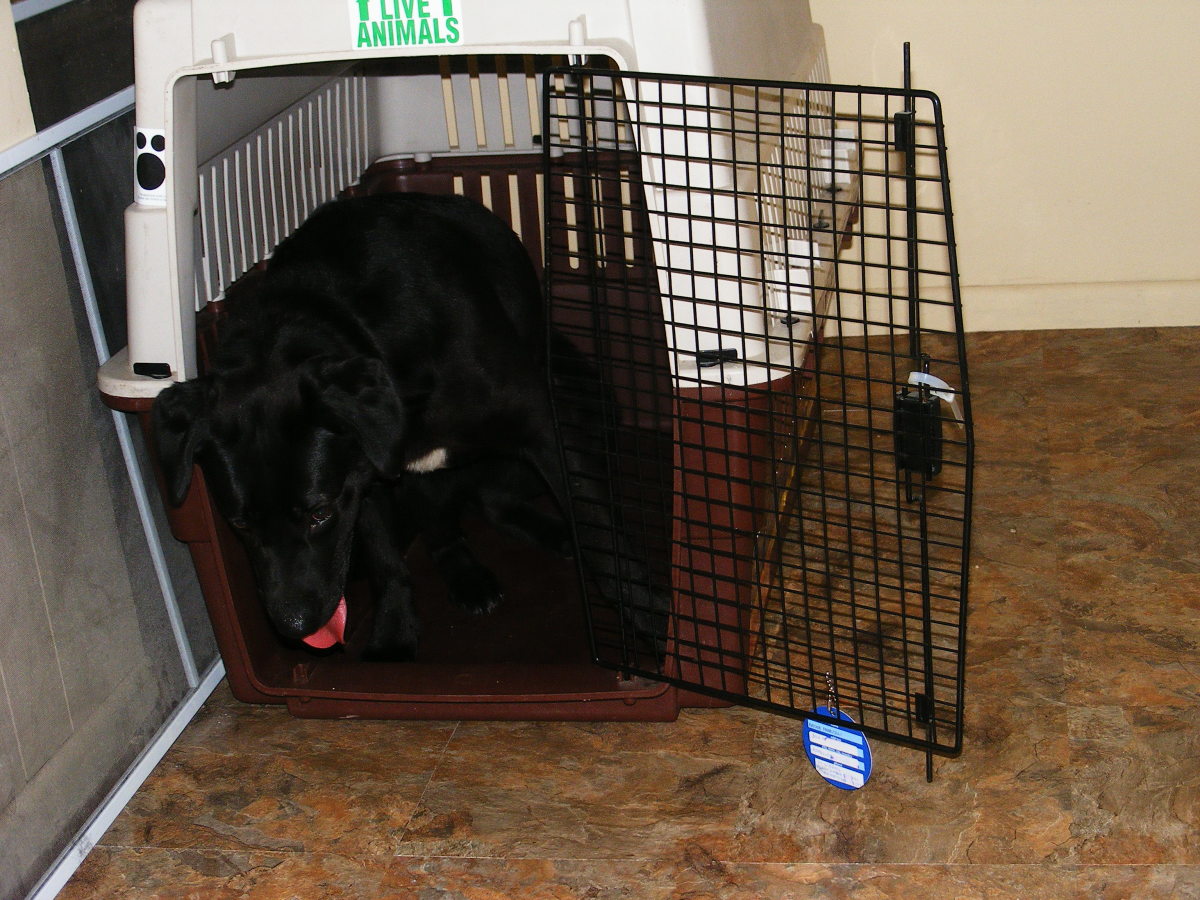
Comfy soft crates
Crates: Prison Cells or Cozy Dens?
When it comes to crate training dogs, the world at times appears to be split in half: those who cringe at the sight of a crate and those who advocate its use. Who is right? The truth can only be revealed by asking the dog. Does the dog look forward to the crate's comfy feeling by voluntarily entering the crate when left open? Or does he immediately freeze and put on the brakes when you ask him to "kennel up"? What the dog thinks about the crate is most likely based on how much the owner worked on making the crate the best place to be.
We are told that crates mimic dens. In nature, as whelping day nears, wild canines tend to dig a den underground or use a cave-like structure for the purposes of protecting the pups from the elements of the environment and potential predators. During the puppy's first weeks, mother dog takes care of cleaning up the puppy's waste. She licks their bottoms and ingests their fecal matter. This keeps the area clean and free of odors. As the puppies get bigger, they learn to not soil the den. Puppies, as they grow, develop a hard-wired instinct to not soil the areas where they sleep. This is the principle which is used to our advantage when crate training.
At around 4-5 weeks the weaning process starts and the pups learn to eat some regurgitated meat from their mothers. At this age they also start exploring the world outside the den. At around 6 weeks they move away from the den and at around 8 weeks they and start using "rendezvous sites." According to Wolf Country, these are meeting areas where the the adults "gather to sleep, play or just "hang out." At this point the den is no longer utilized.
So if a den is no longer utilized at 6 to 8 weeks of age what does this tell us? It tells us several things. To a very young puppy, a crate may look like a comforting place to be, whereas, to an older puppy or adult dog that has never used crate before it may feel like a trap. This does not mean that crates should not be used; it simply means that we may need to intervene to make a crate that happy place to be. Since crates are not really dens as many have heard.
*Note: not all dogs do well crated. Older puppies and adult dogs that have never been in a crate before should not be forced into a crate if they appear to not like it. In such case, it is better to use an exercise pen with the crate inside with the door open.
Crates for House Training a Puppy
As mentioned, crates can work very well for house training puppies, however, crates are best if used when the puppy has better bowel and bladder control, especially if you are not there to take the puppy out around the clock. This means if you want to use a crate with an 8-9 week old puppy you will have to take the puppy possibly outdoors every half hour!
Using a crate when you are unable to take your 8-week-old puppy out every half hour is setting the puppy up for fail. The puppy will soil the crate, make a mess and feel awful because this is unnatural. At 8 weeks, remember that in nature puppies would be out of their den soiling in their rendezvous sites. According to the American Dog Trainers Network, very young puppies with no bladder or sphincter control should not be crated as they need to eliminate very frequently.
Some people at times think that allowing a young puppy to soil in its crate provides a learning experience. This is not true! According to the American Dog Trainer's Network, this actually postpones the house training process. Indeed, this explains why many puppies purchased from pet stores are so difficult to house break. These pets have been forced to soil in their cages and have gotten used to it!
So what to do? With very young puppies, you may be better off using an exercise pen or a closed off area with baby gates installed. Make sure this area is easy to clean and covered with absorbent pads so you can just remove a layer and toss it in the trash for easy clean-up. Make sure you make a corner for soiling and the opposite far-end corner for sleeping and eating. -This is something your breeder should have started already-. Your puppy with time, will learn to soil in one corner and sleep/play in the other.
As he gets good at this, you can then try to introduce the crate. Make sure the crate is of the right size; you do not want it too large or your puppy may make a mess in one corner and sleep comfortably in the other! You should close the puppy in the crate only briefly right after he has soiled outdoors (both pee and poop). The crate should always be nearby so you can keep an eye on your puppy. at all times. The American Dog Trainers Network suggests the following time frames for crating small pups:
- 9-10 Weeks: 30-60 minutes
- 11-14 Weeks: 1-3 hours
- 15-16 Weeks: 3-4 hours
- 17 + Weeks: 4- 6 hours maximum
Want to make your pooch extra happy to be in a crate? Use it like I do! I keep my crates with the door open and with a stuffed Kong or toy inside. My dogs go there voluntarily when they want to feel comfy and enjoy a bit of chewing activity. I also heavily use x-pens. For more tips on how to house train puppies and which products to use to clean up messes, read:
Secret Strategies for Potty Training a Puppy
Crates for Management Purposes
A crate is not only a great way to potty train puppies but can also make a great management tool for when your dog needs to be kept out of trouble. Say your dog tends to bark and jump at guests and you have some guests coming over ? Then a crate will confine your dog while you entertain your guests. Or perhaps, you are afraid Rover will chew and possibly swallow something harmful? The crate will keep him out of trouble.
However, it is extremely important to understand that a crate is not a solution to a problem but a management tool. If your dog is too rowdy around guests, it's your job to train him to practice self-control and go to his place. If your dog tends to eat items, it's your job to train a reliable "leave and drop it" command, and so forth. In other words, use the crate temporarily while you work on a problem, but don't rely on it as a permanent solution. However, use the crate for issues you cannot solve that pose a hazard to your dog, other pets and other people. For example;
- Use the crate if you have guests coming over and they are afraid of dogs.
- Use the crate if there are children and you are not sure how your dog may react to them.
- Use the crate if your dog tends to swallow or chew on things when you cannot supervise
- Use the crate if your dog tends to fight with your other dog and you need to briefly confine him (ie during meal time).
Crates for Travel Purposes
Crates make also great transportation means when you choose the most appropriate ones. If you are going on a car ride, you must invest in a durable crate that will protect your dog and prevent him from becoming projectile should you have to hit hard on the breaks. Make sure your crate is secured well in your car. If you are traveling by plane, you must really be careful in checking with your airline's requirements which are strict. Soft-sided crates such as Sherpa bags may be appropriate if your dog is small and will travel in the cabin with you. Plastic crates are often required for larger dogs that must travel in the airplane's belly. Aluminum crates are very lightweight and extremely durable. Some are even claimed to be "escape proof'.
Types of Dog Crates
There are many crates on the market nowadays your head may be spinning! How to choose the correct one? This guide should help you understand some pros and cons of each type.
- Plastic Crates
These are lightweight when of the smaller sizes and many are good for traveling purposes. However, they have a disadvantage being that they may difficult to clean. You must indeed take them apart if your dog has an accident and you really want to clean them well. Some dogs like these crates because they offer privacy which may help them calm down.
- Wire Crates
Many of these are great for house training because they offer panels which can be used to expand the crate throughout the puppy's growth stages. Cleaning these crates is fairly easy because several have trays that can be pulled out for easy cleaning. With these crates, you can observe your puppy from a distance, however, some puppies may not be able to wind down and relax unless you cover them. Many fold for easy transportation.
- Wood Crates
If you are looking for a crate that keeps your dog safely confined but you also want an appealing look, wood crates are for you. These eye-appealing crates look really good in the home, however they are not the easiest to clean.
- Soft -sided crates
Light-weight, easy to transport and comfortable; these are qualities of soft-sided crates. However, they many not be suitable for dogs who like to chew or scratch as they can easily destroy them.
For escape proof crates read: The Best Crates for Escape Artists
Dog Crate Training: How Long is Too Long?
While crates can be a great aid for house training puppies, they are easy to misuse and abuse. Crates should not be used as storage areas to put your dog for extended periods of time! For instance, don't keep your dog in a crate for 8 hours while you are at work and then another 8 hours when you go to sleep! If you calculate, that is a dog closed up in a crate for a total of 16 hours out of 24! We are talking about two thirds of a day confined! Now imagine yourself cooped up in a room small enough for you to barely stand up and turn around for 16 hours, and then you get the picture!
So how much time is too much time for a dog spent in the crate? Where can a line be drawn between its right use and misuse? The answer varies. For instance, four hours a day spent inside a crate may feel like forever for a dog with high-energy levels whose exercise needs were not met, whereas, for an older and calmer dog that may be acceptable.
For a more concrete answer, according to veterinarian, Jennifer Messer in an article for Modern Dog Magazine, as a general rule of thumb, dogs can be crated for up to half of the day as long as their social and physical needs are met.
Alternatives to crates
Crate Misuse and Abuse
There is a very thin line between the correct use and misuse of a crate for dogs. The following are some ways a crate can be misused and even abused of.
- Don't use a crate to for very young puppies that do not yet have bladder and sphincter control.
- Don't use a crate for more than half of the day.
- Don't crate a dog whose exercise/socialization and mental stimulation needs have not been met.
- Don't crate a dog who has never been used to staying in a crate before and is refusing to go inside.
- Don't crate a dog when it is too hot inside the crate.
- Don't use a crate if your dog is suffering from separation anxiety as it may get worse.
- Don't crate a dog fearful of noises or thunderstorms as the dog may start associating the crate with those noises which defeats the purpose of being a great place to stay.
- Don't use a crate as a solution to a problem you can treat.
While puppies generally readily accept a crate whether because it resembles a den or because they are easier to train, consider that adult dogs may not see a crate in the same way. There is a big difference in crate training a puppy and an adult dog. Adult dogs may require more time to make positive associations with the crate.
According to the Humane Society of the United States crates should not be considered magical solutions to problems and their misuse may cause dogs to feel frustrated and trapped. To avoid over-crating your dog while you are at work consider taking your dog to a doggy daycare or having a neighbor or pet sitter stop by in the middle of the day. You can also invest in a dog run or exercise pen and place the crate inside. This way, your dog does not feel trapped in a small space but is still safe. If he wants to take a nap he can always go inside the crate. A safe room with the crate and its door open may also be a good alternative.
© Alexadry all rights reserved.
Do you use dog crates?
For further reading
- Dog Behavior:The Best Crates for Escape Artist Dogs
Does your dog break and escape from its crate? Every time he does so he may endanger himself to a variety of perils. Learn what causes dogs to escape from their crates and how to solve the problem. - How to Train a Dog to Go Potty on Command
Learn how to put going to the potty on cue so your dog can go potty when needed. No more waiting in the cold and trying to speed up the process! - Secret Strategies for Potty Training your Puppy
Learn effective strategies for potty training your puppy. How to potty train your puppy faster and more effectively.





